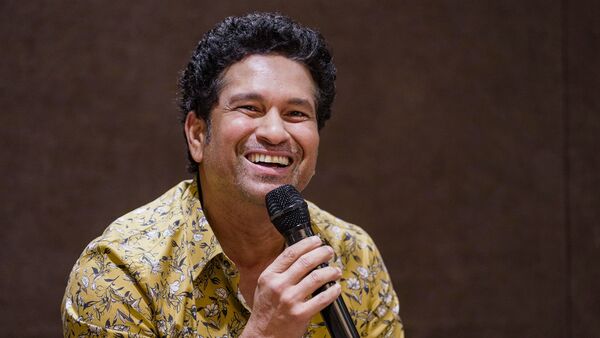Sachin Tendulkar turns 50 today, I would like to draw your attention to something that appears to be about him but is about everything else. Every field has its “greatest” who are usually old, or dead, or both. There is a reason for that and it may not be honourable.
The word ‘greatest’ is commonly used in reference to Sachin Tendulkar, but in a manner that is the opposite of what it is meant to convey. He is considered “one of the greatest batsmen” in the history of cricket, which is also a way of saying he is not the greatest. He has been called “one of the greatest” halfway up his career. Many of his peers who shared that status, who were once considered his equals, did not endure.
I do not deny the wisdom in the expression ‘one of the greatest’. It suggests that there are the mere greats, and then there are some immortal giants, and these giants are equals because at their level, the objective measures of ranks collapse. There can only be artistic ambiguity. I accept that. But then there is one man who is considered “the greatest batsman in the history of the game”—Don Bradman. Considered by whom? By cricketers and sports intellectuals; and as a consequence by cricket fans who may not have seen a single delivery faced by him. It has become a sort of decorum to say Bradman is the best. Only for the sake of journalistic rigour is he described as “among the greatest”.
In many fields, the GOAT (the greatest of all time) has that quality. He is from another time, very old or dead. Football has Pele. Tennis has Rod Laver. Literature and films in every country have their own.
They are the “greatest” not because people know their craft intimately. They are the greatest because they are not relevant to the generation that has been asked to form an opinion about who is the GOAT. What happens is that in every generation, athletes do not have the heart to deem one of their own greater than all of them, so they deem an old distant legend, one who is well past competition, the GOAT, and this goes on with every generation, reinforcing the mascot of an ancient time as “the greatest ever”, an astonishing historical lie that is perpetuated by the jealousy of peers, the romanticism of distance and the condescension the young have for the old and the living have for the dead.
This is the same reason why when “Indian writers in English” are asked who is “the greatest Indian writer in English,” they say R.K. Narayan. Because R.K. Narayan is not a peer, he is beyond competition. It is safe to vote him the GOAT. In fact, I feel most contemporary Indian writers have not even read him. Some writers used to claim the GOAT is Kiran Nagarkar, also a safe choice. Language writers in every region of India have their own GOATs and it is never their peers, but some grand old figure who is not competition. If you take a poll of contemporary Indian filmmakers to find ‘the greatest Indian film director ever’, we know the winner would be Satyajit Ray.
This is like the political phenomenon where “senior leaders” of the Congress want the Gandhi family alone to lead the party because they do not have the heart to back one of their contemporaries. There exist ways to assess just how great sporting legends were in their time. Statistician Charles Davis compared the performances of legends with their peers and expressed their exceptionality as a standard deviation. Standard deviation is broadly a measure of how far a statistical reading is from its category average. In basketball, when points per game were considered, Michael Jordan’s standard deviation from the mean performance of his era was 3.4. In football, when goals per game were considered, Pele stood out at 3.7. Don Bradman was the most exceptional when all major sports were taken into account—his batting average made him stand well apart from his peers, with a standard deviation measure of 4.4.
But then, this does not tell the whole story. The GOATs may have been exceptional compared to their peers, but that does not assure them their greatness when compared to contemporary greats. There are some ways of arguing this point. For instance, we can say that Bradman never faced the sort of bowling Tendulkar had to face, or that Bradman never made difficult tours to unfamiliar pitches like those in India where his vaunted averages would have collapsed. Also, even though it is a myth that there was no off-side rule during Pele’s time, the versions of that rule in his time favoured strikers, and he may not have scored as many goals if he played today. But all these arguments are pointless because we can never be certain of all the factors. There is one indicator though that suggests the GOATs of another era, in some sports if not all, might be far more ordinary than we think.
Consider the extraordinary achievement of Roger Bannister who in 1954 became the first person to run a mile in under four minutes, or at least the first person to be recorded doing so. This was the final frontier of middle-distance running, but soon after his feat, several people ran a mile under four minutes. Today, the world record is about 17 seconds faster. This is not merely a result of ‘inspiration’, training and nutrition. Instead, what it suggests is that a sporting accomplishment of a time is first a consequence of social privilege. As more people get opportunities to participate in sports, true geniuses arise. And they show that the old greats were only best in their small circles.
Whether Tendulkar is greater than Bradman is an uninteresting question. The most interesting question in every sport is never asked: Who is the second best?
Manu Joseph is a journalist, novelist, and the creator of the Netflix series, ‘Decoupled’.
Download The Mint News App to get Daily Market Updates.
More
Less
#GOAT #sports #dead



